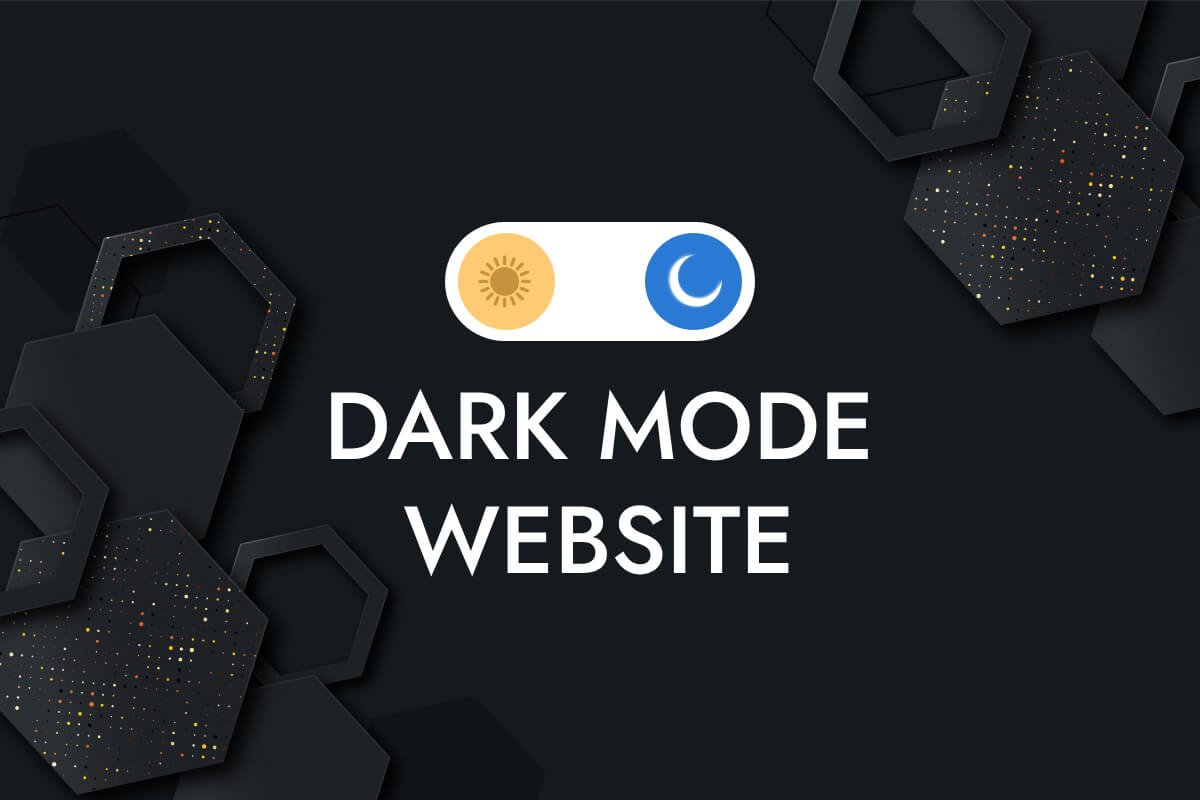Dark mode has become increasingly popular in recent years, offering an alternative color scheme that’s easier on the eyes, particularly in low-light environments. Many major websites and apps, from social media platforms to operating systems, now provide a dark mode option. Implementing dark mode on your website can enhance user experience and cater to visitors who prefer darker themes.
In this article, we’ll walk through the benefits of dark mode, how it works, and step-by-step instructions on how to implement it on your website.
Why Implement Dark Mode?
Before diving into the technical aspects, let’s first understand why dark mode is important and why so many users are adopting it.
- Reduced Eye Strain: Dark mode uses darker colors, which are softer on the eyes, especially in low-light or nighttime conditions. This helps reduce eye strain and fatigue, making browsing more comfortable.
- Energy Savings: On OLED and AMOLED screens, dark mode can save battery life by using less energy. These screens can turn off individual pixels in areas where black is displayed, conserving power.
- Aesthetics: Dark mode provides a sleek, modern look that appeals to many users. It also helps certain types of content, like images and visuals, stand out more.
- User Preference: Many users prefer dark mode, and providing them with this option can improve overall satisfaction with your website. Offering both light and dark themes gives your site a more dynamic, customizable feel.
How Dark Mode Works
Implementing dark mode usually involves creating two different versions of your website’s color scheme: a light theme and a dark theme. The website can then switch between these themes based on user preferences or system settings.
There are two main ways to enable dark mode:
- System-wide Preference: Users’ operating systems or browsers may have a dark mode setting that your website can detect. The site then automatically switches to dark mode if this setting is enabled.
- User Toggle: You can add a toggle switch or button on your website that allows users to manually switch between light and dark modes.
Step-by-Step Guide to Implementing Dark Mode
Here’s a step-by-step guide to adding dark mode to your website:
1. Set Up Your Website’s Color Palette
The first step in implementing dark mode is to define the color schemes for both your light and dark themes. For dark mode, use darker backgrounds (typically shades of black, gray, or dark blue) and lighter text (such as white or light gray) to ensure readability.
Here’s an example of a color palette for dark mode:
- Background color: #121212 (dark gray/black)
- Text color: #E0E0E0 (light gray/white)
- Accent color: #BB86FC (a soft purple)
- Button background: #333333 (medium gray)
- Button text: #FFFFFF (white)
Make sure to maintain good contrast between your background and text to ensure accessibility. A contrast ratio of at least 4.5:1 is recommended.
2. Use CSS Variables to Define Colors
CSS variables (also known as custom properties) make it easier to switch between light and dark modes. You can define your color values once using variables and then switch between themes by changing these values.
Here’s an example of how to set up CSS variables for both light and dark themes:
:root {
/* Light mode colors */
--background-color: #FFFFFF;
--text-color: #000000;
--accent-color: #007BFF;
}
.dark-mode {
/* Dark mode colors */
--background-color: #121212;
--text-color: #E0E0E0;
--accent-color: #BB86FC;
}
body {
background-color: var(--background-color);
color: var(--text-color);
}In this example, the :root selector defines the default light mode colors, and the .dark-mode class overrides those variables for dark mode.
3. Detect System Preferences for Dark Mode
To make your website automatically switch to dark mode based on the user’s system settings, you can use the prefers-color-scheme CSS media feature. This detects whether the user has dark mode enabled at the operating system level.
Here’s how to apply this in your CSS:
@media (prefers-color-scheme: dark) {
body {
background-color: #121212;
color: #E0E0E0;
}
}This CSS rule applies dark mode styles when the system-wide dark mode preference is active. It ensures that users who prefer dark mode system-wide will automatically see your website in dark mode.
4. Add a Dark Mode Toggle Switch
While detecting system preferences is convenient, giving users the option to manually switch between light and dark modes provides greater flexibility. You can add a toggle switch on your website that allows users to choose their preferred mode.
Here’s a basic HTML toggle button for dark mode:
<label class="switch">
<input type="checkbox" id="darkModeToggle">
<span class="slider"></span>
</label>And here’s the corresponding CSS for the toggle switch:
.switch {
position: relative;
display: inline-block;
width: 60px;
height: 34px;
}
.switch input {
opacity: 0;
width: 0;
height: 0;
}
.slider {
position: absolute;
cursor: pointer;
top: 0;
left: 0;
right: 0;
bottom: 0;
background-color: #ccc;
transition: .4s;
}
.slider:before {
position: absolute;
content: "";
height: 26px;
width: 26px;
left: 4px;
bottom: 4px;
background-color: white;
transition: .4s;
}
input:checked + .slider {
background-color: #2196F3;
}
input:checked + .slider:before {
transform: translateX(26px);
}
Finally, add JavaScript to handle switching between light and dark mode:
const toggleSwitch = document.getElementById('darkModeToggle');
const currentTheme = localStorage.getItem('theme');
if (currentTheme) {
document.body.classList.add(currentTheme);
if (currentTheme === 'dark-mode') {
toggleSwitch.checked = true;
}
}
toggleSwitch.addEventListener('change', function() {
if (this.checked) {
document.body.classList.add('dark-mode');
localStorage.setItem('theme', 'dark-mode');
} else {
document.body.classList.remove('dark-mode');
localStorage.setItem('theme', 'light-mode');
}
});
This script checks if the user has previously selected dark mode and applies it when they return to the site. The user’s preference is saved using localStorage so that it persists across visits.
5. Test Your Dark Mode Implementation
Once you’ve set up dark mode, it’s crucial to test your website to ensure everything works as expected. Here are a few things to check:
- Contrast and readability: Make sure your text is easy to read against dark backgrounds.
- Images and media: Ensure that images look good in both light and dark modes. Some images may need color adjustments to fit the dark theme.
- Cross-browser compatibility: Test your dark mode implementation in different browsers (Chrome, Firefox, Safari, etc.) to ensure compatibility.
- Accessibility: Make sure that your color choices meet accessibility standards, especially for users with vision impairments.
6. Provide Fallbacks for Older Browsers
Not all browsers support the prefers-color-scheme media query. Make sure to provide a fallback for users on older browsers by setting a default theme or enabling the manual toggle.
Conclusion
Dark mode is more than just a trend—it’s a practical feature that enhances the user experience and reduces eye strain. By implementing dark mode on your website, you can provide your visitors with a choice, whether they prefer light or dark themes.
Using CSS variables, detecting system preferences, and offering a manual toggle switch are effective ways to implement dark mode. With careful testing and thoughtful design, you can create a seamless, user-friendly dark mode experience that aligns with modern web design practices in 2024.














